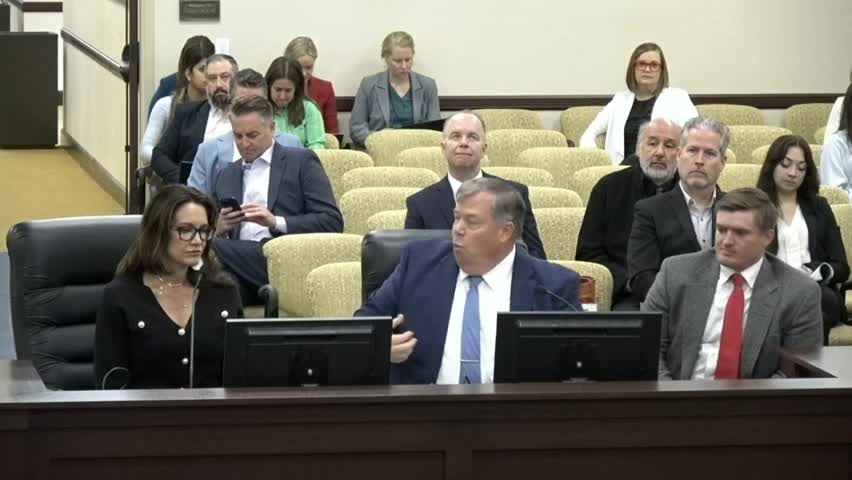Innovative Utah program aims to transform inmate reentry success
October 16, 2024 | Utah Interim, Utah Legislative Branch, Utah
This article was created by AI summarizing key points discussed. AI makes mistakes, so for full details and context, please refer to the video of the full meeting. Please report any errors so we can fix them. Report an error »

In a recent government meeting, officials discussed innovative approaches to improving reentry programs for incarcerated individuals in Utah. The focus was on creating tailored support systems that address the unique challenges faced by individuals upon their return to society, moving away from a one-size-fits-all model.
Key to this initiative is the identification of both risk and protective factors that influence an individual's likelihood of successful reintegration. Officials emphasized the importance of understanding each person's background, struggles, and specific needs, which will help in developing targeted interventions. This personalized approach aims to enhance public safety by reducing recidivism rates through effective support mechanisms.
The meeting highlighted successful examples from other states, such as Arizona and Idaho, where similar reentry initiatives have shown promise. Utah's efforts include the establishment of peer-led programs, which have already demonstrated reductions in violence and improved accountability within correctional facilities. A notable program mentioned is the newly opened 384-bed peer-led initiative at the USCF campus, which has garnered significant interest, evidenced by a waiting list of 228 individuals.
Officials also addressed the critical role of education and employment in successful reentry. They acknowledged that many individuals enter the prison system lacking basic literacy skills, which hampers their ability to engage with rehabilitation programs. By integrating educational support within the correctional environment, the state aims to equip individuals with essential skills before their release.
Concerns were raised regarding the integration of comprehensive healthcare services into the reentry process. Legislators stressed the need for a holistic approach that encompasses mental health and substance abuse treatment, emphasizing that individuals cannot succeed without addressing their overall well-being. The Department of Health and Human Services has been tasked with overseeing healthcare within correctional facilities, and officials reported ongoing efforts to improve coordination and information sharing among various agencies.
Additionally, the meeting touched on the importance of data collection and analysis to track the effectiveness of these initiatives. A new dashboard is being developed to monitor key performance indicators, including employment rates post-release, which will help refine and enhance reentry strategies.
Overall, the discussions underscored a commitment to innovative, individualized support for those reentering society, with the ultimate goal of enhancing public safety and reducing recidivism through comprehensive care and targeted interventions.
Key to this initiative is the identification of both risk and protective factors that influence an individual's likelihood of successful reintegration. Officials emphasized the importance of understanding each person's background, struggles, and specific needs, which will help in developing targeted interventions. This personalized approach aims to enhance public safety by reducing recidivism rates through effective support mechanisms.
The meeting highlighted successful examples from other states, such as Arizona and Idaho, where similar reentry initiatives have shown promise. Utah's efforts include the establishment of peer-led programs, which have already demonstrated reductions in violence and improved accountability within correctional facilities. A notable program mentioned is the newly opened 384-bed peer-led initiative at the USCF campus, which has garnered significant interest, evidenced by a waiting list of 228 individuals.
Officials also addressed the critical role of education and employment in successful reentry. They acknowledged that many individuals enter the prison system lacking basic literacy skills, which hampers their ability to engage with rehabilitation programs. By integrating educational support within the correctional environment, the state aims to equip individuals with essential skills before their release.
Concerns were raised regarding the integration of comprehensive healthcare services into the reentry process. Legislators stressed the need for a holistic approach that encompasses mental health and substance abuse treatment, emphasizing that individuals cannot succeed without addressing their overall well-being. The Department of Health and Human Services has been tasked with overseeing healthcare within correctional facilities, and officials reported ongoing efforts to improve coordination and information sharing among various agencies.
Additionally, the meeting touched on the importance of data collection and analysis to track the effectiveness of these initiatives. A new dashboard is being developed to monitor key performance indicators, including employment rates post-release, which will help refine and enhance reentry strategies.
Overall, the discussions underscored a commitment to innovative, individualized support for those reentering society, with the ultimate goal of enhancing public safety and reducing recidivism through comprehensive care and targeted interventions.
View full meeting
This article is based on a recent meeting—watch the full video and explore the complete transcript for deeper insights into the discussion.
View full meeting

